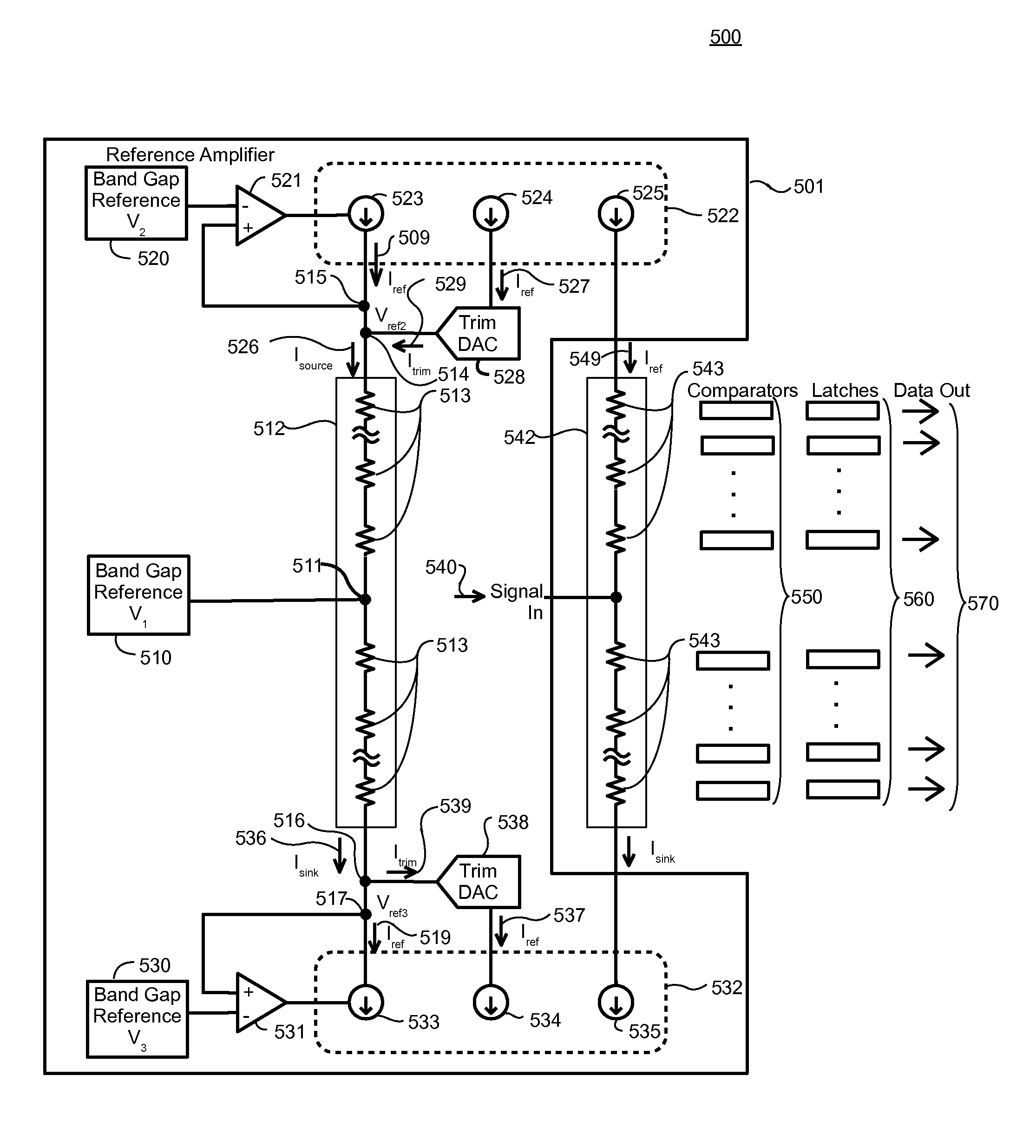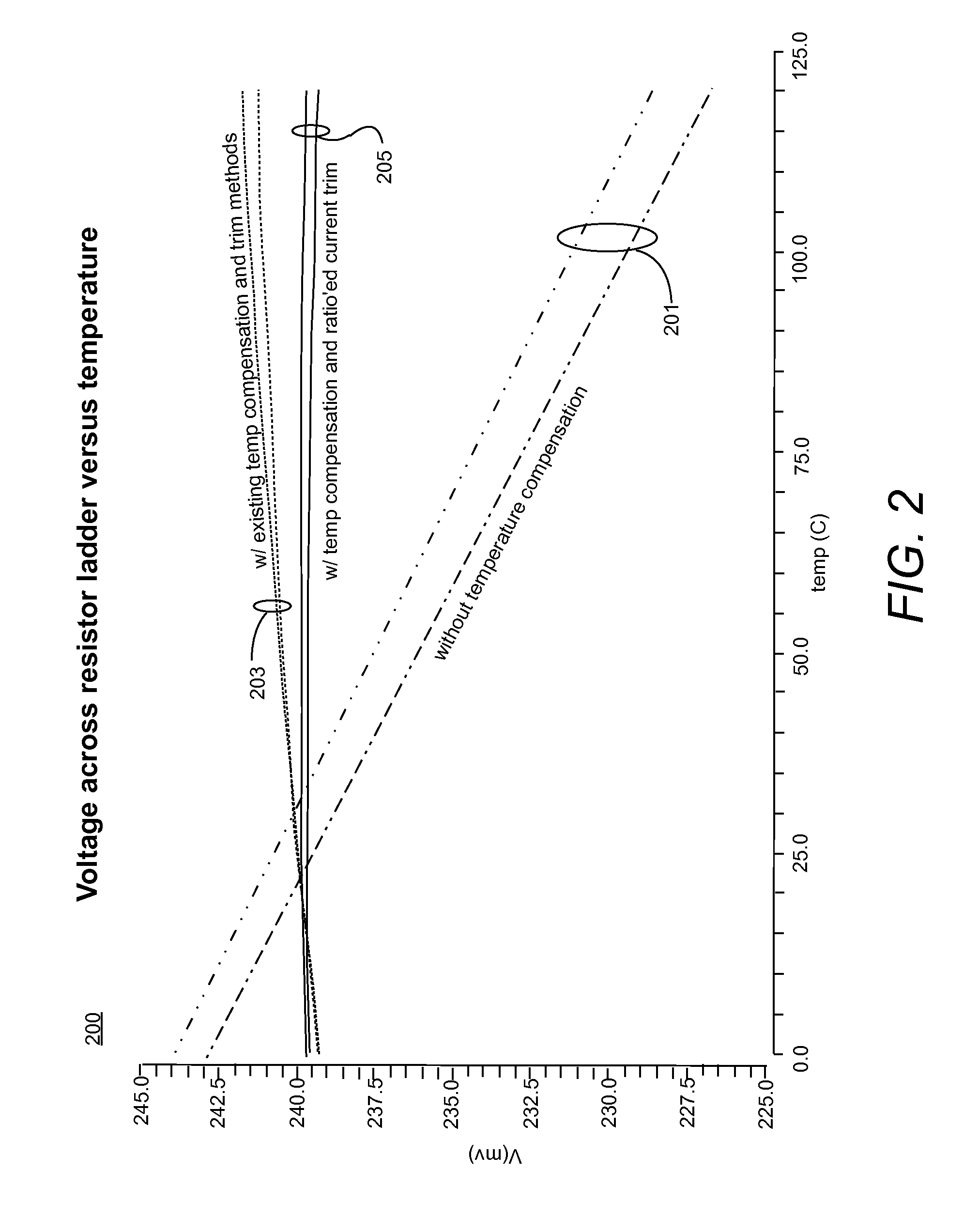Apparatus and method for temperature compensated gain and mismatch trim in subranging quantizers and analog to digital converters
a temperature-compensated gain and mismatch trim technology, applied in the field of electronic circuits, can solve the problems of reducing the resolution of flash adcs, reducing the performance of flash adcs, and adding significant cost to the final produ
- Summary
- Abstract
- Description
- Claims
- Application Information
AI Technical Summary
Benefits of technology
Problems solved by technology
Method used
Image
Examples
Embodiment Construction
[0019]A flash analog to digital converter (ADC) requires a temperature compensated reference current in order to generate stable voltage drops across the architecture's quantizing resistor ladder. This is generally accomplished through replica biasing using a replica resistor ladder. In addition, voltage drops in the actual or output resistor ladder must be trimmed to the appropriate voltages to account for process variations. Conventional methods introduce a non-temperature compensated offset to the voltages resulting in a degradation of performance.
[0020]The resistors in the resistor ladder are temperature sensitive. That is, as temperature changes, the resistance value of each resistor also changes. For example, when the temperature of the resistor ladder increases, the resistance of each resistor in the resistor ladder may decrease. A constant reference current applied across the resistor ladder will cause the voltage drop across the resistor ladder to change with temperature, w...
PUM
 Login to View More
Login to View More Abstract
Description
Claims
Application Information
 Login to View More
Login to View More - R&D
- Intellectual Property
- Life Sciences
- Materials
- Tech Scout
- Unparalleled Data Quality
- Higher Quality Content
- 60% Fewer Hallucinations
Browse by: Latest US Patents, China's latest patents, Technical Efficacy Thesaurus, Application Domain, Technology Topic, Popular Technical Reports.
© 2025 PatSnap. All rights reserved.Legal|Privacy policy|Modern Slavery Act Transparency Statement|Sitemap|About US| Contact US: help@patsnap.com



